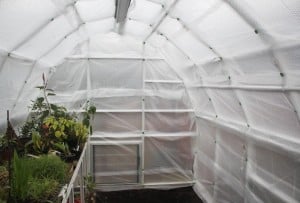 Remember, remember the fifth of November is an ideal opportunity to burn woody material that doesn’t compost readily. Build your bonfire as late as possible so hedgehogs and amphibians don’t take up residence beforehand, then save the wood ash. It is a good source of potash for fruiting trees, though younger wood contains more than older branches. Spread it as soon as the ash is cool, (wet wood ash is difficult to move) then damp it down so it doesn’t blow around. Alternatively, mix the ash into your compost heap.
Remember, remember the fifth of November is an ideal opportunity to burn woody material that doesn’t compost readily. Build your bonfire as late as possible so hedgehogs and amphibians don’t take up residence beforehand, then save the wood ash. It is a good source of potash for fruiting trees, though younger wood contains more than older branches. Spread it as soon as the ash is cool, (wet wood ash is difficult to move) then damp it down so it doesn’t blow around. Alternatively, mix the ash into your compost heap.
Weather is impossible to predict these days but it is better to hope for the best and prepare for the worst. Containers should be wrapped in bubble wrap or hessian or stood on ‘pot feet’, bricks or blocks of wood to stop the compost from becoming waterlogged and the pots from cracking in frost. For added protection, move them into the protection of a sheltered wall.
Even though the weather has been mild, the glasshouse has now been cleaned, all plant debris removed, tidied and insulated with bubble wrap ready for the first frost which must surely come soon. It is a good time to check that you electric heater is working, too. If you only have a few tender plants they can be put in the greenhouse then covered with a double layer of horticultural fleece or divide and insulate a proportion of your greenhouse using a double wrap ‘curtain’ to save the cost of heating the whole structure! Do remember to allow for ventilation of the greenhouse on warm days to prevent problems with grey mould and check plants regularly and removing any material showing the first signs of pests or diseases.
It is still not too late to feed the lawn and the occasional mow during winter helps too. Raise the cut slightly higher than you do in summer and don’t mow when the ground is waterlogged or frosty. You can also use the mower to collect leaves from the lawn on a dry day by raising the cut to its highest level; they are chopped up by the blades and can then be composted.
Bare root woody plants like hedging, fruit and some ornamentals are available this month; make sure you order early to avoid disappointment and plant immediately on arrival. If this is not possible due to time constraints or the ground is frozen or waterlogged, dig a trench and plant them temporarily. It is a good time of year for planting roses, too.
Fruit trees that are usually winter pruned from December onwards, like apples, pears and cordon redcurrants, can be pruned once the leaves have fallen. This saves your fingers freezing in cold weather while trying to make delicate cuts with secateurs, loppers and saws. Roses, buddleia and ‘Lavatera’ can be cut back by half to one third to reduce the chance of wind-rock – November can be a very wet and windy month.
Happy gardening! Matt.


